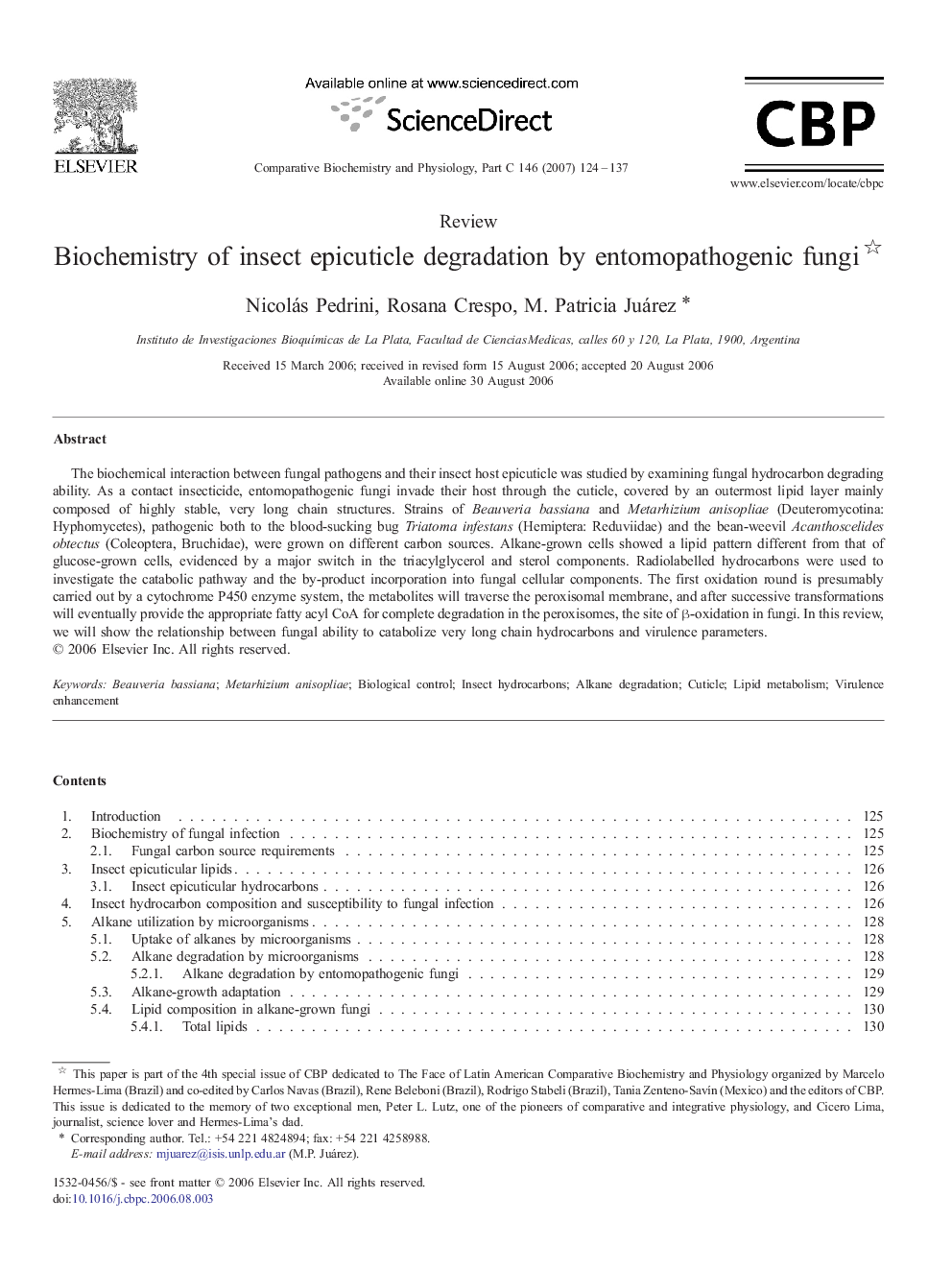| کد مقاله | کد نشریه | سال انتشار | مقاله انگلیسی | نسخه تمام متن |
|---|---|---|---|---|
| 1977936 | 1539300 | 2007 | 14 صفحه PDF | دانلود رایگان |

The biochemical interaction between fungal pathogens and their insect host epicuticle was studied by examining fungal hydrocarbon degrading ability. As a contact insecticide, entomopathogenic fungi invade their host through the cuticle, covered by an outermost lipid layer mainly composed of highly stable, very long chain structures. Strains of Beauveria bassiana and Metarhizium anisopliae (Deuteromycotina: Hyphomycetes), pathogenic both to the blood-sucking bug Triatoma infestans (Hemiptera: Reduviidae) and the bean-weevil Acanthoscelides obtectus (Coleoptera, Bruchidae), were grown on different carbon sources. Alkane-grown cells showed a lipid pattern different from that of glucose-grown cells, evidenced by a major switch in the triacylglycerol and sterol components. Radiolabelled hydrocarbons were used to investigate the catabolic pathway and the by-product incorporation into fungal cellular components. The first oxidation round is presumably carried out by a cytochrome P450 enzyme system, the metabolites will traverse the peroxisomal membrane, and after successive transformations will eventually provide the appropriate fatty acyl CoA for complete degradation in the peroxisomes, the site of β-oxidation in fungi. In this review, we will show the relationship between fungal ability to catabolize very long chain hydrocarbons and virulence parameters.
Journal: Comparative Biochemistry and Physiology Part C: Toxicology & Pharmacology - Volume 146, Issues 1–2, July–August 2007, Pages 124–137